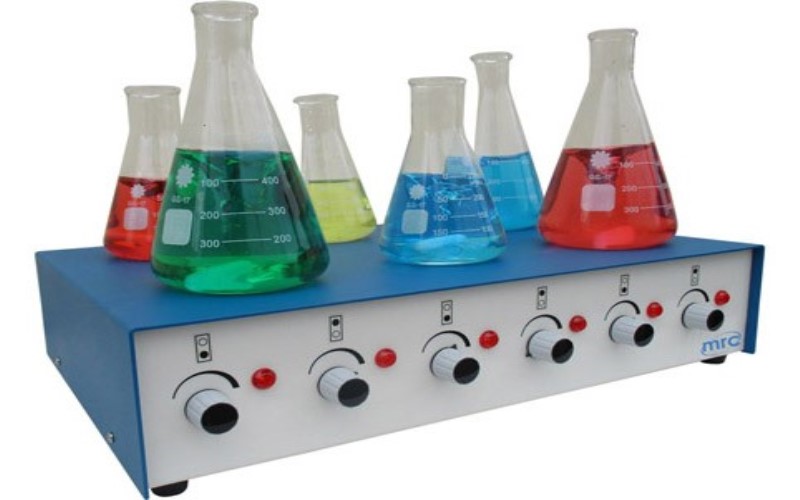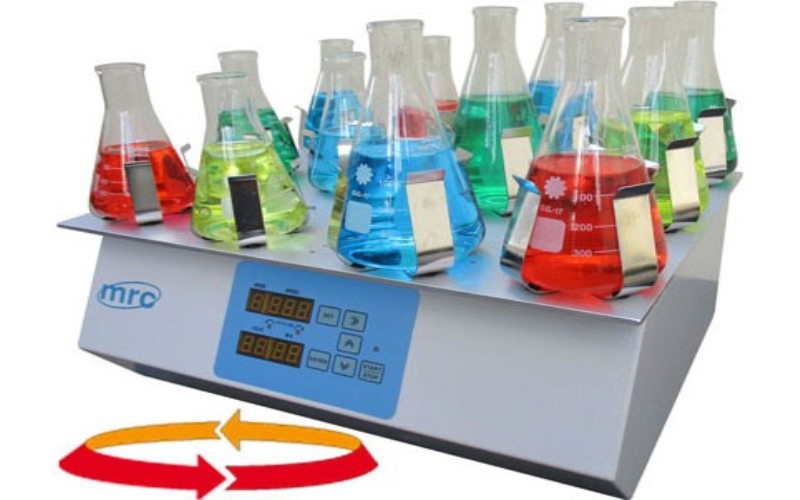If you are working in a laboratory, you know that laboratory shakers are essential equipment for your work. They are used to mix, blend, or agitate solutions, suspensions, or emulsions. However, with so many types and models of laboratory shakers available, it can be challenging to choose the right one for your work. In this guide, we will provide you with everything you need to know about laboratory shakers, including their types, features, applications, and maintenance.
Types of Laboratory Shakers
There are several types of laboratory shakers available, each with its unique features and applications. The most common types are:
Orbital Shakers
Orbital shakers are designed to shake horizontally in a circular motion. They are commonly used for culturing cells, mixing liquids, and extracting DNA or RNA. They can accommodate various sizes and types of flasks, tubes, and plates, and some models come with adjustable speed and temperature controls.
Rocking Shakers
Rocking shakers shake back and forth in a see-saw motion. They are ideal for mixing reagents, solvents, and buffers, as well as for hybridization and staining of gels. They can accommodate a range of bottles, tubes, and plates, and some models come with adjustable tilt angle and speed controls.
Vortex Shakers
Vortex shakers use a high-speed circular motion to mix small volumes of liquids or powders. They are commonly used for mixing or dissolving chemicals, resuspending cells, and preparing samples for analysis. They can accommodate various types of tubes and plates, and some models come with adjustable speed and mode controls.
Magnetic Stirrers
Magnetic stirrers use a rotating magnetic field to stir liquids or suspensions. They are commonly used for stirring or mixing solutions, suspensions, or emulsions, as well as for preparing media and buffers. They can accommodate various sizes and types of flasks, beakers, and bottles, and some models come with adjustable speed and temperature controls.

Incubator Shakers
Incubator shakers are designed to shake and incubate samples simultaneously. They are commonly used for cell culture, fermentation, and microbiological applications that require temperature control and aseptic conditions. They can accommodate various sizes and types of flasks, tubes, and plates, and some models come with adjustable temperature, humidity, and CO2 controls.

Water Bath Shakers
Water bath shakers use a water bath to maintain a constant temperature and shake samples at the same time. They are commonly used for culturing cells, extracting DNA or RNA, and general mixing applications that require temperature control. They can accommodate various sizes and types of flasks, tubes, and plates, and some models come with adjustable temperature, shaking speed, and timer controls.
Features to Consider
When choosing a laboratory shaker, you should consider several features that can affect its performance and suitability for your work. The most important features to consider are:
Capacity
The capacity refers to the maximum volume or weight it can accommodate. You should choose a shaker that can handle the volume or weight of your samples without overcrowding or damaging the equipment.
Speed and Agitation Type
The speed and agitation type determine how fast and how vigorously it can shake your samples. You should choose a shaker that can provide the appropriate speed and agitation type for your samples’ needs, such as gentle or vigorous shaking.
Temperature Range
The temperature range determines the range of temperatures it can maintain or control. You should choose a shaker that can provide the appropriate temperature range for your samples’ needs, such as ambient or elevated temperatures.
Timer
The timer of allows you to set the duration of shaking for your samples. You should choose a shaker that can provide the appropriate timer settings for your samples’ needs, such as short or long shaking durations.
Material and Construction
The material and construction determine its durability and resistance to corrosion, contamination, or damage. You should choose a shaker that is made of high-quality materials and designed for easy cleaning and maintenance.
Noise Level
The noise level can affect your comfort and safety during operation. You should choose a shaker that produces minimal noise or vibration and meets the safety standards for your laboratory environment.
Applications of Laboratory Shakers
Laboratory shakers have various applications in different fields of science and industry. The most common applications are:
Cell Culture and Microbiology
Laboratory shakers are essential for culturing cells and microorganisms in vitro. They can provide the appropriate conditions for cell growth, proliferation, and differentiation, as well as for studying microbial physiology and genetics.
Chemistry and Biochemistry
Used for mixing or stirring chemicals, solvents, and reagents in various chemical and biochemical reactions. They can facilitate the preparation of samples for analysis, purification, or synthesis, as well as for studying enzymatic kinetics and protein folding.
Food Science and Agriculture
Used for testing and developing food and agricultural products, such as fermentation, extraction, or preservation processes. They can simulate the conditions of the food or soil environment and optimize the quality and yield of the products.
Pharmaceutical and Medical Research
Used for developing and testing drugs and medical devices, such as drug screening, formulation, or delivery systems. They can simulate the conditions of the human body and evaluate the efficacy and safety of the products.
Environmental and Geological Sciences
Laboratory shakers are used for studying environmental and geological phenomena, such as soil erosion, sedimentation, or mineral extraction. They can simulate the conditions of the natural environment and analyze the properties and behaviors of the materials.
Maintenance and Safety Tips
To ensure the optimal performance and safety of your laboratory shaker, you should follow these maintenance and safety tips:
Regular Cleaning and Sterilization
You should clean and sterilize your laboratory shaker regularly to prevent contamination or damage to your samples and equipment. You should use appropriate cleaning agents and methods and follow the manufacturer’s instructions for maintenance.
Lubrication and Calibration
You should lubricate and calibrate your laboratory shaker regularly to ensure its smooth and accurate operation. You should use appropriate lubricants and calibration standards and follow the manufacturer’s instructions for maintenance.
Inspection and Repair
You should inspect your laboratory shaker regularly for any signs of wear, damage, or malfunction. You should repair or replace any worn or damaged parts and contact the manufacturer or service provider for any repairs or replacements that require technical expertise.
Safe Operation
You should operate your laboratory shaker safely and responsibly to prevent accidents or injuries. You should follow the manufacturer’s instructions for operation and safety, use appropriate personal protective equipment, and avoid overcrowding or overloading the equipment.

